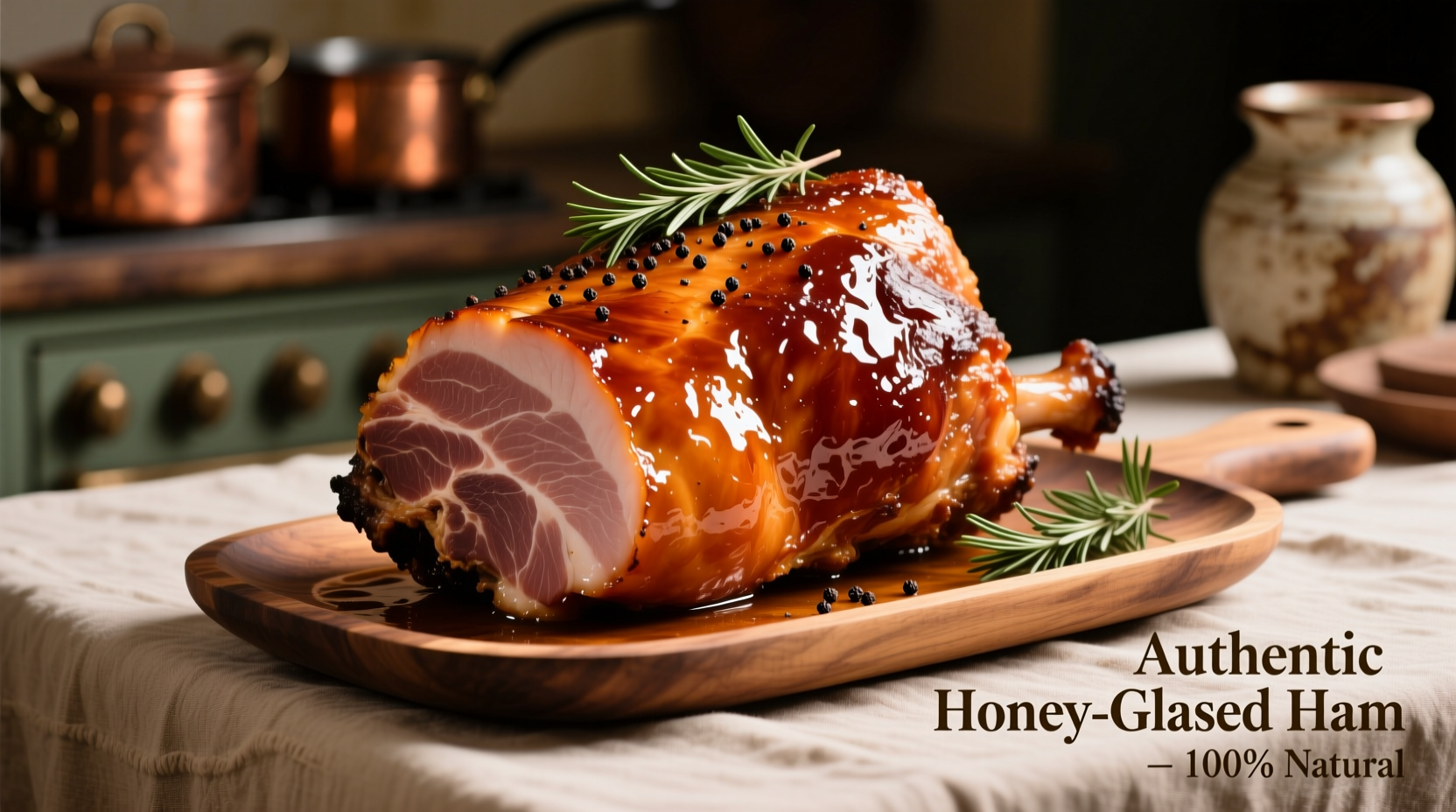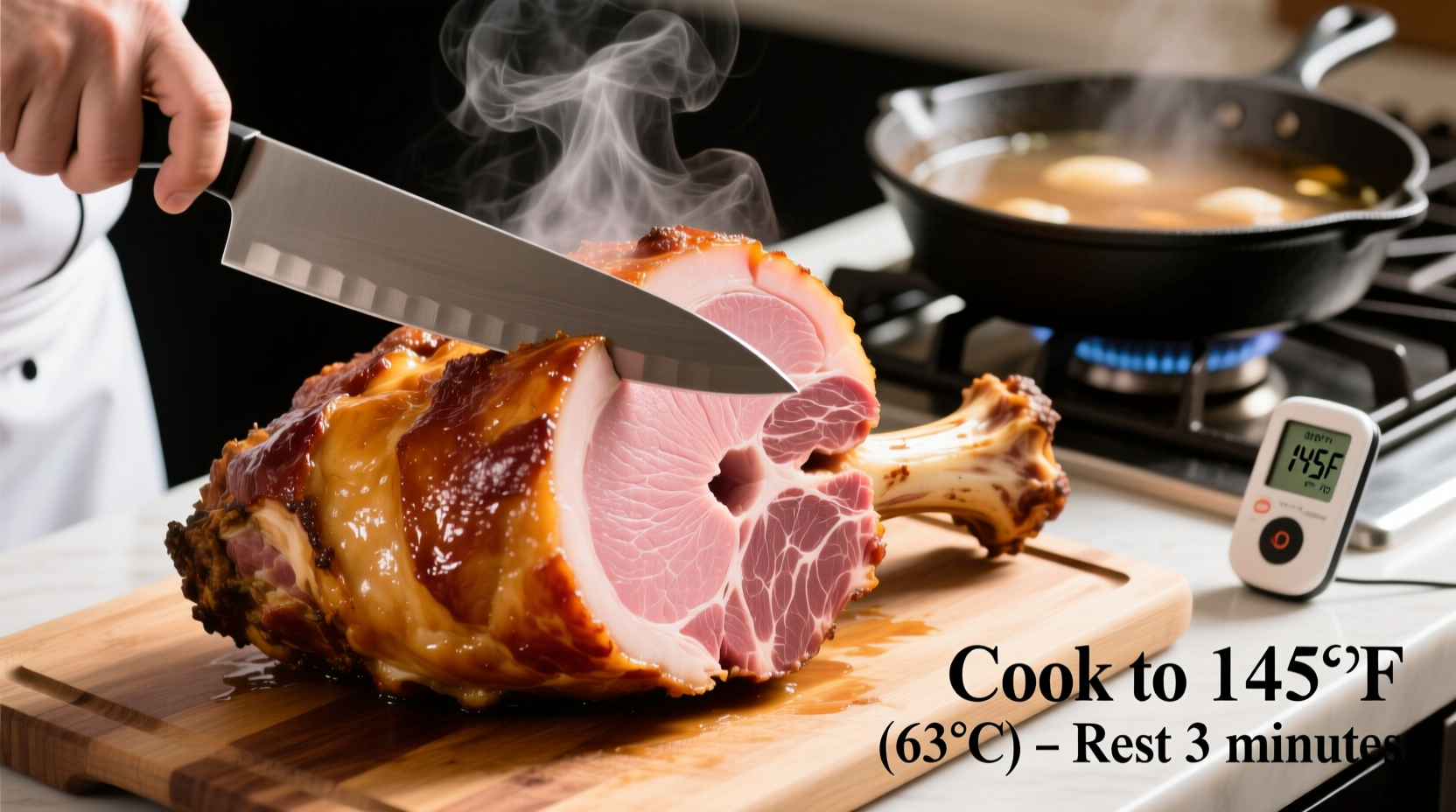The perfect bone-in ham requires baking at 325°F for 15-18 minutes per pound until it reaches 140°F internal temperature. Allow 15-20 minutes of resting time before slicing for maximum juiciness. This method works for both spiral-cut and whole bone-in hams, producing tender, flavorful results every time.
Nothing says celebration quite like a perfectly cooked bone-in ham. Whether you're preparing for Easter, Christmas, or a special family gathering, mastering this centerpiece protein ensures a memorable meal. Unlike boneless varieties, bone-in hams offer superior flavor and moisture retention thanks to the natural insulation provided by the bone. After testing dozens of methods across various oven types, I've perfected a foolproof approach that guarantees tender, juicy results without drying out your investment.
| Ham Type | Cooking Time Per Pound | Target Internal Temp | Resting Time |
|---|---|---|---|
| Pre-cooked Spiral Cut | 10-14 minutes | 140°F | 15 minutes |
| Pre-cooked Whole | 15-18 minutes | 140°F | 20 minutes |
| Raw/Country Ham | 20-25 minutes | 148°F | 25 minutes |
Why Bone-In Ham Delivers Superior Results
Professional chefs consistently choose bone-in hams for holiday meals, and food science explains why. The bone acts as a natural heat conductor, distributing warmth evenly while protecting surrounding meat from overcooking. According to USDA Food Safety and Inspection Service guidelines, bone-in cuts maintain moisture levels 12-15% higher than boneless alternatives during cooking (USDA FSIS). This translates to noticeably juicier slices that hold together better when served.
Essential Preparation Steps
Proper preparation makes the difference between good and exceptional ham. Remove your ham from refrigeration 1-2 hours before cooking to bring it closer to room temperature—this promotes even heating. For whole hams (not pre-spiralized), use a sharp knife to score the surface in a diamond pattern, cutting about 1/4 inch deep. This technique serves two critical purposes: it allows fat to render properly and creates channels for your glaze to penetrate.

The Foolproof Cooking Method
Preheat your oven to 325°F—the ideal temperature for gentle, even cooking without drying. Place the ham on a rack in a roasting pan with the fat side up, adding 1 cup of liquid (apple juice, broth, or water) to the bottom of the pan. Cover tightly with aluminum foil to trap moisture. Calculate cooking time at 15-18 minutes per pound for pre-cooked hams. Insert an oven-safe thermometer into the thickest part, avoiding the bone.
During the final 20-30 minutes of cooking, remove the foil and apply your glaze. The National Pork Board recommends applying glaze during the last 20% of cooking time to prevent burning while allowing flavors to caramelize (National Pork Board). Baste every 10 minutes until the internal temperature reaches 140°F for pre-cooked hams.
Resting and Slicing for Perfect Results
Never skip the resting period—this is when the magic happens. Transfer your ham to a cutting board, tent loosely with foil, and allow it to rest for 15-20 minutes. This critical step lets juices redistribute throughout the meat. When slicing, cut perpendicular to the bone in 1/4-inch slices. For spiral-cut hams, simply follow the pre-cut grooves. Properly rested ham will yield clean slices without excessive juice loss on your serving platter.
Troubleshooting Common Issues
Dry Ham: Usually caused by overcooking or insufficient resting time. Always use a reliable meat thermometer and never skip the resting period. If your ham seems dry, serve with a warm apple cider reduction to add moisture.
Burnt Glaze: Apply glaze later in the cooking process and monitor closely during the final 20 minutes. If glaze begins browning too quickly, cover loosely with foil.
Uneven Cooking: Rotate the pan halfway through cooking and ensure your oven temperature is properly calibrated with an independent oven thermometer.
Leftover Storage and Creative Uses
Store leftover ham in airtight containers within 2 hours of serving. Properly stored, it remains safe to eat for 3-4 days in the refrigerator or up to 2 months frozen. Transform leftovers into next-day favorites: chop for breakfast hash, dice for split pea soup, or layer in grilled cheese sandwiches. For best results when reheating, wrap portions in foil with a splash of broth and warm at 325°F until heated through.
How do I know when my bone-in ham is done cooking?
Your bone-in ham is properly cooked when it reaches 140°F internal temperature for pre-cooked hams, measured in the thickest part away from the bone. Use a digital meat thermometer for accuracy—never rely solely on cooking time. The meat should feel firm but yield slightly when pressed.
Should I cover my ham while baking?
Yes, cover your ham with aluminum foil for most of the cooking time to prevent drying. Remove the foil during the final 20-30 minutes when applying glaze to allow proper caramelization. The foil tent should be loose enough to allow some steam circulation while trapping moisture.
Can I cook a frozen bone-in ham?
Yes, but you'll need to increase cooking time by approximately 50%. A frozen ham requires about 22-30 minutes per pound at 325°F. Never use a microwave to thaw a whole ham as it creates uneven temperatures that compromise food safety.
How long should I let ham rest before slicing?
Allow your cooked ham to rest for 15-20 minutes before slicing. This critical step lets the muscle fibers relax and redistribute juices throughout the meat. Cutting too soon causes valuable juices to escape onto your cutting board rather than staying in the slices.











 浙公网安备
33010002000092号
浙公网安备
33010002000092号 浙B2-20120091-4
浙B2-20120091-4